Three People Dead In Iran’s Floods: Red Crescent
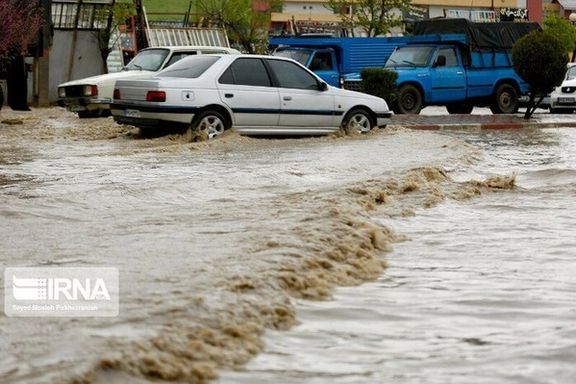
Floods have killed three people in Iran in the last 24 hours, according to the country’s Red Crescent.

Floods have killed three people in Iran in the last 24 hours, according to the country’s Red Crescent.
Since Wednesday, six provinces of East Azarbaijan, West Azarbaijan, Ilam, Kordestan, Kermanshah and Lorestan have been in need of rescue services due to heavy rains.
Morteza Moradipour from the Red Crescent said 861 people in 11 cities and 21 villages have received rescue services so far. A further 385 people provided with emergency accommodation and 24 transferred to safe houses.
Shahin Fat’hi, CEO of the Red Crescent Society of Tehran warned about the possibility of flooding in some areas of the province saying that all rescue teams and operational centers in Tehran are on alert.
The massive flood in Iran took the lives of 62 people last year and dozens of others went missing. Indian sub-continent summer monsoons usually bring rain showers to Iran’s arid plateau, but every few decades the impact becomes more intense and causes flooding.
Partly due to the arid nature of the land and partly because of neglect in urban planning, even a modestly strong storm leads to deadly floods in Iran. Many dry riverbeds are choked off with construction or debris dumped by residents, leading to sudden flash floods in places no one expected.

Iran’s Armed Forces issued a statement on Thursday claiming that the countdown to the collapse of Israel has begun.
It is the latest in a stream of anti-Israel propaganda released by the regime which is at fever pitch in rallying the Muslim world against its archenemy.
“Experience has shown that any compromise plan, including the normalization of ties between the Zionist regime and some Islamic countries, has failed, and the Islamic resistance is the only solution to the Palestinian issue,” reads the statement.
It was likely referring to the internal political division in Israel, with protests against the government's legislative reforms. Iranian proxies in Gaza, Lebanon and Syria have all recently attacked Israel with rockets as tensions simmer during the holy month of Ramadan.
A few years ago, Supreme Leader Ali Khamenei said Israel must be destroyed in 25 years and the government even set up a countdown clock in Tehran. Many Iranians mock the anti-Israel rhetoric and the ticking clock, but the regime is adamant in repeating its threat.
The latest statement was released on the eve of Quds Day, an annual event showing solidarity with Palestine and against the state of Israel. It was proclaimed by the founder of the Islamic Republic Ruhollah Khomeini in 1979.
In Iran, Quds Day also features demonstrations against other countries that the regime deems as enemies, including the United States, the UK and Saudi Arabia.

The Islamic Republic is going all out to ensure mass attendance at anti-Israel rallies for Quds Day in another attempt to undermine its archenemy.
Iranian state media is sounding the rallying cry for participation in the annual pro-Palestine event, held on the last Friday of the Muslim fasting month of Ramadan, which is on April 14 this year.
In addition to several organizations affiliated with the Revolutionary Guards, the country's traditional army, the Islamic Republic’s Assembly of Experts for Leadership, and government ministries as well as several Iranian Maraji -- supreme legal authorities for Twelver Shia Muslims – issued statements in the past few days, calling for participation.
Such state-sponsored events are usually shunned by the general public and the regime ends up transporting paramilitary Basij forces and its supporters from small towns to provincial capitals to form demonstrations with large crowds for the façade of mass support.
A large number of students and conscripts who are serving their mandatory military service as well as workers of government organizations are either forced or cajoled into partaking in the event in exchange for food, days off, and financial bonuses.
According to a letter obtained by "IranWire” website, the Physical Education Organization of Tehran province, has ordered directors of sports centers of the province to make sure national teams’ athletes participate in the "Quds Day march".
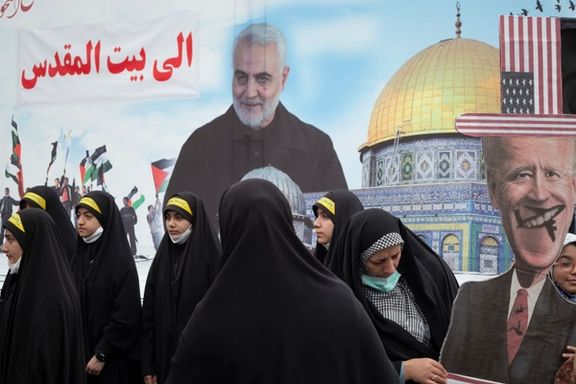
In the letter, Karamali Iraji, a deputy at the Ministry of Sport and Youth, also talked about a “directive by the Tehran’s governor’s office” about forcing the national teams' athletes to show up at 10:30 on Friday morning at Tehran’s Vali-Asr square, one of the main routes of the rallies.
The routes for the rallies are pre-determined by the regime and different recreational booths and gift shops are usually set up along the way. The regime also installed a huge mural at Enghelab (Revolution) square, which leads to Tehran’s main square Azadi. The colossal banner reads, “We will be in Quds in less than 17 years,” referring to remarks by Supreme Leader Ali Khamenei who keeps saying that the Israeli government will fall by then and Muslims will conquer the region.
Iran’s Parliament Speaker Mohammad Bagher Ghalibaf has been announced as the official who will deliver the main speech on the day. The content of the speech is already obvious for Iranians who have been listening to the same statements for at least four decades. It will start with the promulgation of the Palestinian cause and their right to the “occupied territories” and will go on with highlighting “the atrocities by the Zionist regime” and will end with the latest political upheavals inside Israel. Reiterating Khamenei’s views, the speaker will probably predict that Israel will fall within a certain number of years.

In a post on his Twitter account on Thursday, Iran’s Foreign Ministry spokesman Nasser Kanani posted pictures of a recent meeting between top leaders of the Palestinian and Lebanese resistance movements, Hamas and Hezbollah, both proscribed terror groups in the West. He said: “The balance of power has long shifted – to the detriment of the fake Israeli regime and to the benefit of the Palestinian nation.”
The event, which takes its name from the Arabic-language name for Jerusalem, is held to express support for Palestinians and oppose Israel and Zionism. Directed against Israel’s existence, Al-Quds Day was proclaimed by the founder of the Islamic Republic Ruhollah Khomeini on 7 August 1979. He called on Muslims worldwide to unite in solidarity against Israel and in support of the Palestinians, saying the "liberation" of Jerusalem was a religious duty to all Muslims.”
In Iran, Quds Day also features demonstrations against other countries that the regime deems as enemies, including the United States, the UK and Saudi Arabia. It has now become an international phenomena to perpetuate antisemitic and anti-Israel propaganda among the Muslim world under the auspices of a collective cause propagated by Iran's dictator.
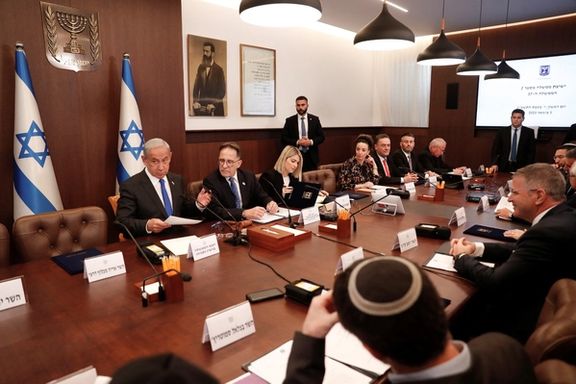
Senior Israeli intelligence analysts have spoken about the in-depth research its dedicated units are doing in assessing the threat from Iran.
In an article in Israeli newspaper Maariv, four officials revealed the country’s focus on Iran’s internal divide, its economic woes, its nuclear program and its foreign policy implications.
The four experts from the Iran branch of the AMAN unit, the Israel Defence Forces’ intelligence division, spoke about the turning point of 2015’s nuclear deal, which emboldened the regime to expand its influence across the region, not least, in Syria.
However, by 2018, under the Trump administration, everything changed when a raft of sanctions came down hard on the regime, with support and pressure from Israeli Prime Minister Benjamin Netanyahu, and Iran was made an international pariah state. Rather than stem the tide, this only hastened the race to arm, said the intel chiefs.

Aligning its proxy militia Hezbollah with President Assad's fight in Syria against opposition elements, an alliance to which the Russians also joined, Iran’s net has only grown wider. It has led to a tit for tat shadow war in Syria which has become a battleground between Iran and Israel, and even drawn in US forces.
This becomes more complex as was seen last week, when threats grow ever closer to Israel’s borders, with rockets raining down on Israel from Gaza, all with the guiding hand of Tehran.
But much more than only the nuclear threat, the Iran branch of the intelligence unit analyzes Iran’s internal affairs, from the protests to its economic crisis, all of which play a role in better understanding a country whose regime pledges to destroy the Jewish state but is more concerned with internal threats.
The unit claims that roughly 80 percent of the Iranian public does not support the regime, a figure which few could question in the light of mass protests since September, part of its bi-annual assessments on the domestic situation.
The internal strife facing Iran is a huge focus of the Iran unit, reaffirming the belief that the regime’s power is waning. "This protest expresses deep trends that exist in the Iranian public of moving away from the regime's values and a dramatic decrease in trust in it,” one officer said.
However while they say it is the most significant event in recent history, set to influence decision making in the years to come, the protest still lacks leadership and an alternative political system to the regime.
"It is impossible to separate the Iranian nuclear issue from the internal protest in the country", explained one of the officers. "There are very limited forums of people who make decisions in Iran, and they do so on many issues. When an Iranian decision-maker has to decide on a certain issue, he also has to think about many other things that are not necessarily related to each other."
Its research has found several elements that influence the decision-making of the leadership of the Revolutionary Guards. In order or priority, the first is the internal situation in the country and regime’s stability, then there is the economic situation, security, industrial strength and finally, its place on the world stage.
There is no doubt that its nuclear program has helped Iran leverage its international might, the focus of the foreign branch of the Iran unit, concentrated on the leverage Iran utilizes from its nuclear power.
Recent diplomatic rapprochement with Saudi Arabia and the United Arab Emirates only compound the fear Iran is sending rippling through the region. This has in turn, alarmed the security establishment in Israel, admits the intelligence team.
“Iran's relations with significant countries have strengthened and its nuclear program is at its most advanced point ever. It manages to leverage it in the diplomatic arena as well," senior security officials explained with concern.
Iran knows the US has no plans to launch an attack of any kind and the diplomatic crisis under the Biden administration only plays into the Iranians’ hands, yet further emboldening the regime. In its softly-softly approach, hoping to revive the JCPOA nuclear deal, Biden has only given Iran the green light.
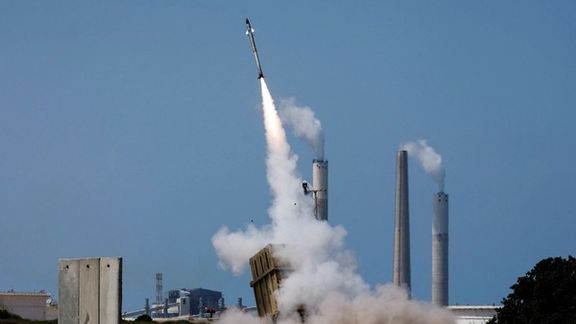
As is clear, Iran is nearing the upper end of enrichment to 90-percent and AMAN’s experts say even a return to the nuclear deal cannot change this.
"In our opinion, Iran does not seek to develop nuclear weapons in the immediate term," said a senior officer. "And even if they reach 90% enrichment now, then even once they decide to develop a bomb and assuming no one prevents them from doing so, it will take them between two and three years." Even from reaching fissile material, there is some way to go to turning that into an airworthy missile.
"Iran understands that the development of nuclear weapons is a very dangerous issue, and no one in Tehran wants to take a step that they will regret,” explained one official.
“We currently define Iran as a nuclear threshold country. They mainly conduct a policy of trial and error during their enrichment, every time we are taking another step in the plan and are waiting to see how the world reacts. Diplomatic ties with Europe, for example, are very important for the Iranians." Even Iran’s new bosom buddies Russia and China have no interest in Iran having nuclear weapons in their hands, AMAN’s team admits.
While much recent focus has looked at the Iranian presence in Syria, it does not pose as much of a threat as that of its role in Iraq, says AMAN’s analysts. "Iran wants to keep Iraq as close as possible," explains one Major in the team. "The Iranians are successful in the diplomatic arena vis-à-vis Iraq, they have a pro-Iranian government there and the goal in Tehran is to perpetuate the situation as it is. Iran still has dozens of affiliates in Iraq, which include thousands of people. This is a force that Iran has actively supported for several years and invests hundreds of millions of dollars in it annually."
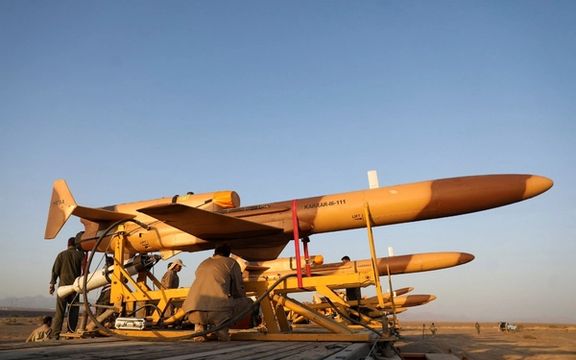
From an intelligence point of view, the immediate danger from Iraq is the hundreds of armed UAVs that are already stationed there and could be sent to Israel in the event of a conflict, made all the more difficult for Israel as its hands are tied by complicated military limitations, mainly due to the caution being exerted in the area by the US.
Iran would relish the idea of a weakening relationship between Israel and the US, seen recently since Netanyahu’s proposed judicial reforms and proposals to bring in more orthodox religious laws across the country. Protests have rocked Israel since the right-wing coalition took hold in January and Iran loves to see this as the sign of the state’s imminent collapse, rather than its standing firm in its democratic values.
Israel makes no secret of the fact Iran is the Jewish state’s biggest threat, an honor once held by its proxy, Hamas, which controls the Gaza Strip. However, the team in AMAN is aware that before Iran, comes the threat much closer to home, Hezbollah, an entity which was born of the desire to exterminate Israel. Neither Israel nor Iran seems keen to take the conflict into the arena, but for Hezbollah, that is another question.
“Today we are preparing much more for a possible attack on Iran, and are making much more offensive and defensive military preparations in the Iranian context,” one official said, but this really is a last resort in a game which could have horrific ripple effects for the whole region.
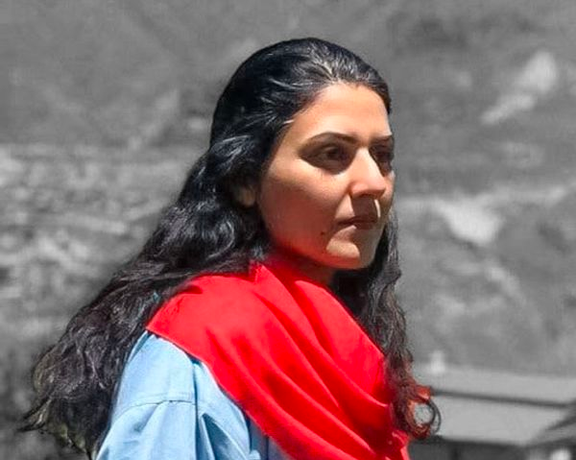
Golrokh Iraee, an Iranian civil rights activist who has been detained for 200 days, has been sentenced to seven years in prison.
Iraee, a writer, accountant, political prisoner and a human rights defender has advocated passionately against the practice of stoning in Iran.
During the mass arrest of activists amidst the Mahsa Amini protests in September 2022, Iraee was arrested by security forces in her house.
She is now sentenced to six years in prison on charges of "association and collusion to commit crimes against national security" and to one year on the charge of "propaganda against the government".
The activist has also been given a two-year travel ban, a two-year ban on living in Tehran, a two-year ban on attending parties and gatherings and has had her mobile phone confiscated.
The security institutions and the judiciary have put pressure on Iraee and her family many times, saying the only way for her to be released from prison is to write a personal pardon request to Ali Khamenei, the supreme leader of the Islamic Republic.
In September 2014, Iraee and her husband were both arrested by the Revolutionary Guards after the discovery of writings about the stoning of women. Iraee was released from prison in April 2022 after enduring years of imprisonment. However, her release lasted only four months.

In an open letter to Iran’s Supreme Leader Ali Khamenei, female Islamic scholar Sedigheh Vasmaghi has strongly challenged his recent edict over hijab.
In her letter which has been widely shared through social media, Vasmaghi has warned Khamenei that he will personally be responsible for all the “financial, physical, social, ethical, psychological and political” consequences of enforcing compulsory hijab rules as he has recently demanded.
“Discarding hijab is haram (sin) based on Sharia and also politically,” Khamenei emphatically declared at a meeting with state officials on April 4 while claiming that foreign intelligence services were encouraging Iranian women to disobey mandatory hijab.
Taking their cue from the speech, officials have been competing to re-establish control over women which has somehow waned following anti-regime protests, and they made a host threats, including expulsion from universities, against hijab-less women.
Vasmaghi has argued that the strict hijab rules have no foundation in the Quran which never specified that women have to cover their hair. According to Vasmaghi, there is also no evidence that women were harassed or punished for not covering their hair and body during the lifetime of the Prophet Muhammed.

“On what specific and unbreakable religious foundations and what logic the Islamic Republic’s prescribed dress code for women, which you also approve and stress, has been based?” she wrote and asked Khamenei to elucidate his religious and political arguments for demanding enforcement of his personal views over the society.
She also argued that Sharia scholars may insist that following the model prescribed by the Islamic Republic is religiously required but there is no absolute religious basis for coercing all women to obey such edicts by using government resources and force and at the cost of violating women’s dignity, and harm to the society.
Vasmaghi who taught Fiqh, the science of ascertaining the precise terms of the Sharia (Islamic law) at Tehran University before being banned from teaching due to her political view is famous for her poetry. She left Iran in 2011 and taught Islamic studies at University of Göttingen in Germany and University of Uppsala in Sweden as a guest professor until 2017 when she returned to Iran.
Vasmaghi who used to wear a black veil for years has relaxed her own hijab in recent years and no longer covers all her hair as she used to.
Only five months after the Islamic Revolution of 1979, then leader of Iran Ayatollah Ruhollah Khomeini banned women from appearing without a veil in government offices. The ban gradually spread to the entire society within the next two years.
All women eventually gave in to covering their hair, even if partially, with headscarves and shawls and wear tunics and trousers that could be tight-fitting and/or colorful. The hardline religious and political establishment considered this level of compliance faulty and called these women ‘bad-hijab’.
Most Iranian women, however, resisted wearing the long black veil, called chador, that the hardline religious and political establishment considered as ‘the ultimate hijab’ and tried to impose by making it mandatory in some government offices and universities. Many women would wear the chador to work or school, if they absolutely had to, but would remove it as soon as they were within a safe distance.
In the past few years, however, some women began to wear their headscarves on their shoulders rather than their heads, in their private vehicles and anywhere else they could not be harassed by the police and vigilantes.
Since the death of the 22-year-old Mahsa Amini in the custody of morality police and the protests that engulfed the country for months many women have discarded their headscarves altogether and vowed never to wear it again so instead of ‘bad-hijab’ women, the Islamic Republic is now facing the phenomenon of ‘hijablessness’ as a form of civil disobedience.